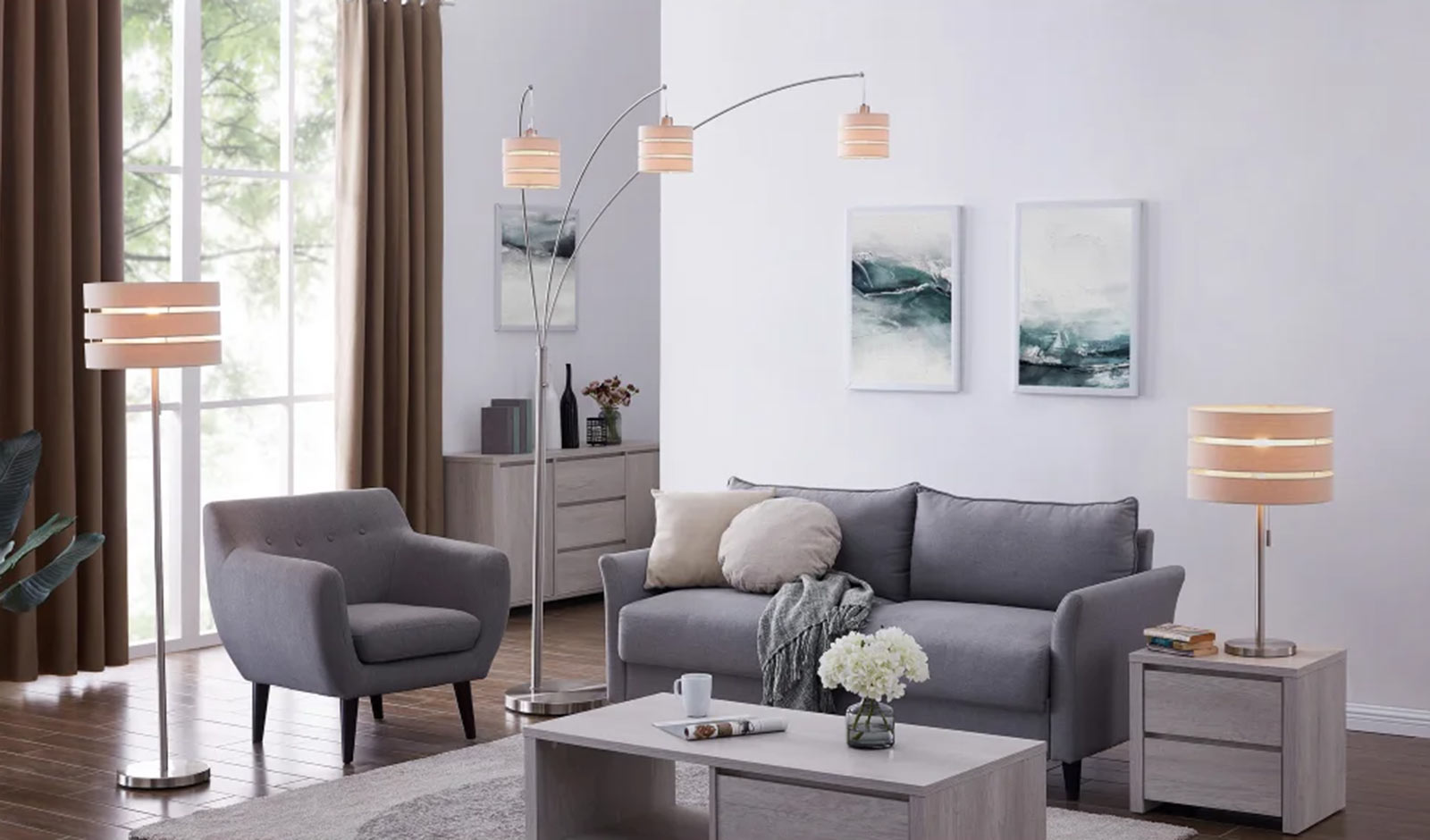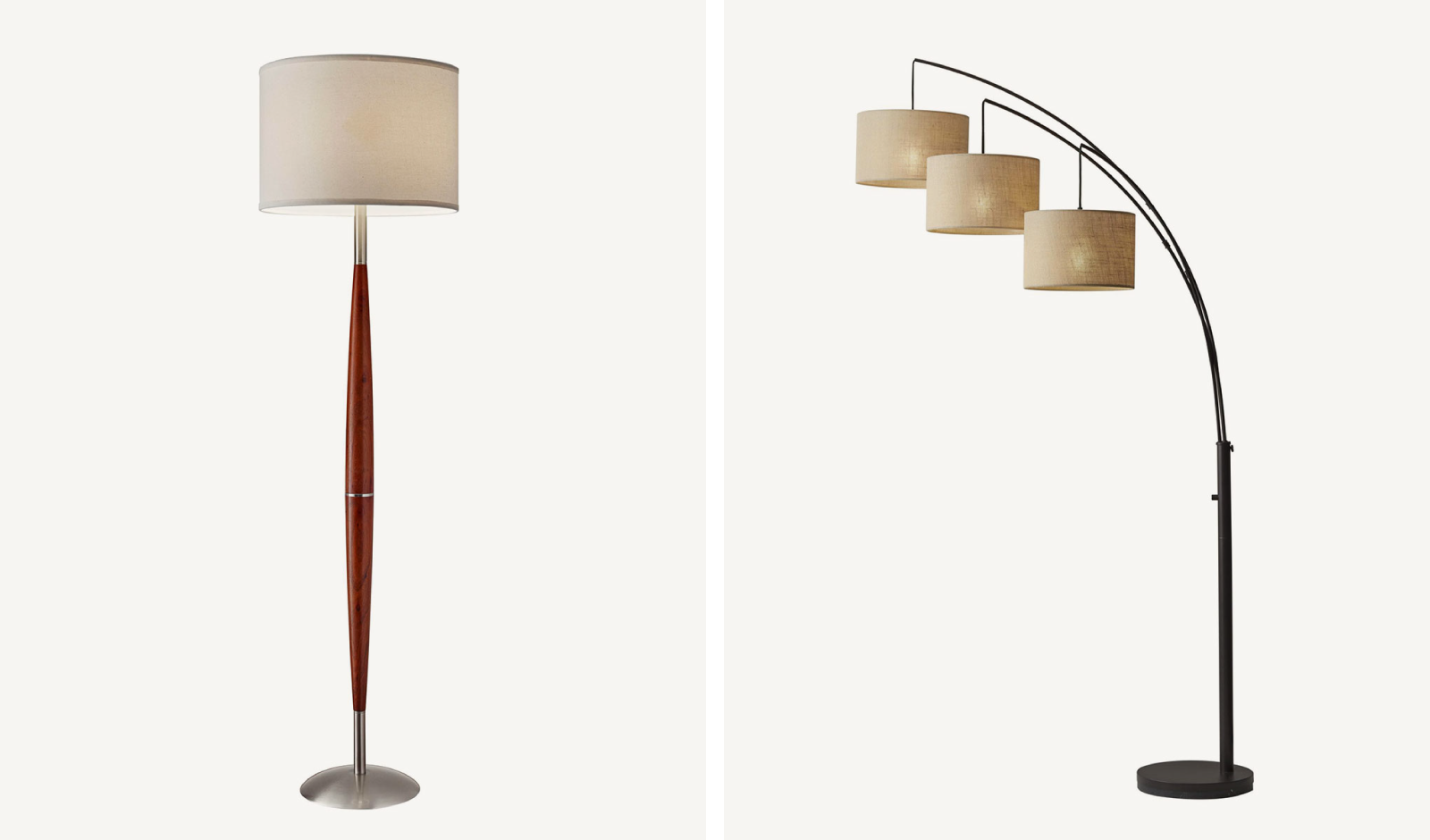Daylight Savings Time ended last weekend… which means that lighting is at the top of our minds! Ensuring that your home is well-lit makes long winter evenings cozy, welcoming, and joyful – never, ever dim or depressing.
Many of our customers say they find lighting to be a challenge. A room seems bright, but they still can’t read or work comfortably. Or their lighting is all-or-nothing – the lights are blazing, or they’re completely in the dark.
If that sounds familiar, we’re here to help! The key to cracking the lighting code is to understand the three main types of lighting: ambient lighting, task lighting, and accent lighting.
Ambient Lighting
Ambient lighting, or general lighting, provides overall illumination for a room. Ideally, your general lighting will provide an even level of light throughout your room, with no dark corners.
Pro tip: We tend to think of ceiling fixtures or wall sconces as sources of ambient lighting. But if a room needs additional light, you don’t necessarily have to call in an electrician. Torchiere-style floor lamps bounce light off walls and ceilings to create all-over illumination – they’re a great, easy-to-install option to increase your ambient light.
Task Lighting
Task lighting illuminates a particular area of a room that serves a specific function. If a room seems bright but you find yourself straining to read or work comfortably, task lighting is the solution.
Pro tip: Size (and height) matters! When choosing a table lamp, make sure that your table is wider than your lampshade to keep the arrangement from looking unbalanced or top-heavy. When placed next to a sofa or a bed, the bottom of the shade should fall at about chin height – giving you the benefit of extra light, without it shining in your eyes.
Accent Lighting
Accent lighting highlights a feature of your room – like framed artwork, a sculpture or vase, or even a stunning houseplant. Adjustable fixtures that focus light on a specific area, like track lighting, are popular choices for accent light.
Pro tip: Accent lighting can even tiptoe into task lighting’s territory. By using accent light to illuminate a bookcase, you can highlight your gorgeously styled shelves… while also making it easier to see the title you’re searching for.
Putting It All Together
Most rooms call for a combination of ambient, task, and accent lighting – the precise balance will depend on your personal taste and how you use the room.
We recommend moving from general to specific as you plan your lighting. First, make sure you have enough ambient lighting to illuminate your entire room comfortably. Choose dimmable fixtures or replace wall switches with dimmers, so that you can adjust the level of light to suit different moods or times of day.
Next, add task lighting where you need it. In a workspace, you might choose a gooseneck lamp to throw light on the desk where you do your paperwork. In a bedroom or a reading nook, a table lamp at an appropriate height will allow you to read comfortably, even when the overall light level in the room is low.
Finally, layer in accent lighting. This is the moment to express your unique design personality! Highlight an object that deserves a place in the spotlight – or add a light fixture that is a work of art, all by itself.
Now that you know what you need, lighting-wise, stop into the store to experience our thoughtfully curated collection of lighting in person – or start browsing online. Or if you’re still in the dark about lighting design, make an appointment with one of our interior designers! We love working with our customers to make their homes the very best they can be, from furniture to fittings.


